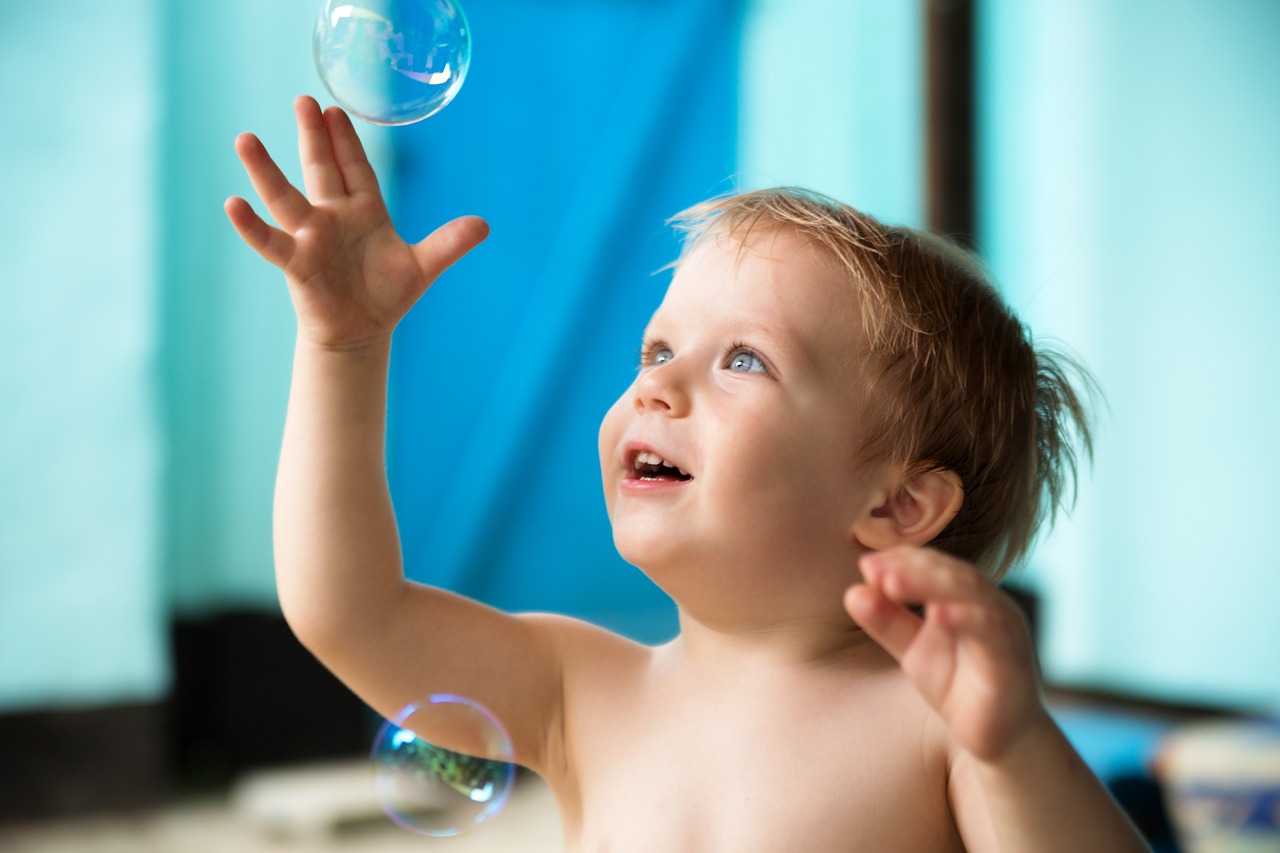This article explores enchanting mermaid movies perfect for children, providing a delightful escape into underwater worlds filled with adventure, friendship, and imagination.
1. The Allure of Mermaid Tales
Mermaid stories have a unique ability to captivate young audiences. With themes of adventure, self-discovery, and the magic of friendship, these tales resonate deeply with children. The enchanting world of mermaids invites viewers to explore the depths of the ocean while embarking on thrilling journeys that teach valuable life lessons.
2. Top Mermaid Movies for Kids
Here are some of the best mermaid films that enchant and entertain:
- The Little Mermaid: Disney’s classic tale of Ariel, a young mermaid who dreams of life on land. Its vibrant animation and memorable songs make it a must-watch for kids.
- Splash: A lighthearted film featuring a mermaid who falls in love with a human, blending romance and comedy in a whimsical way.
- Barbie in a Mermaid Tale: This animated adventure showcases Barbie as a mermaid who discovers her true identity and learns about friendship and bravery.
3. Educational Themes in Mermaid Movies
Many mermaid films incorporate valuable life lessons:
- Friendship and Loyalty: These films often emphasize the significance of friendship, showcasing how characters support each other through challenges.
- Courage and Self-Discovery: Protagonists frequently embark on journeys that teach children about bravery and the importance of being true to oneself.
4. The Role of Music in Mermaid Films
Music plays a pivotal role in enhancing storytelling:
- Iconic Soundtracks: From catchy tunes to heartfelt ballads, the soundtracks of mermaid movies are often memorable and impactful.
- The Impact of Music on Storytelling: Music not only entertains but also helps convey emotions and themes, enriching the narrative experience for young viewers.
5. Animation Styles in Mermaid Movies
The animation style significantly influences the appeal of mermaid films:
- Traditional vs. CGI Animation: Comparing hand-drawn animation to modern CGI techniques reveals how visual styles shape the portrayal of mermaids and their underwater worlds.
- The Importance of Visual Effects: Visual effects create immersive environments, enhancing the magical experience for children.
6. Cultural Representations of Mermaids
Mermaids appear in folklore across different cultures:
- Folklore and Mythology: Understanding the origins of mermaid tales offers insights into their cultural significance.
- Modern Interpretations of Mermaid Legends: Contemporary films often reinterpret traditional mermaid legends, adapting them for today’s audiences.
7. Conclusion: The Enduring Magic of Mermaid Movies
Mermaid movies continue to enchant children with their magical stories and valuable lessons. As timeless tales of adventure and friendship, they inspire young dreamers to explore their imaginations and dive into the wonders of the underwater world.

1. The Allure of Mermaid Tales
Mermaid tales have long enchanted children and adults alike, weaving together themes of adventure, friendship, and self-discovery. These captivating stories often transport viewers to magical underwater realms, where mermaids navigate their unique challenges and dreams. The allure of mermaids lies not only in their beautiful appearances but also in their complex narratives that resonate deeply with young audiences.
One of the key elements that makes mermaid stories so appealing is their ability to spark imagination. Children are drawn to the idea of exploring vast oceans, encountering mystical creatures, and embarking on thrilling quests. This sense of adventure fosters a desire for exploration and creativity, encouraging young dreamers to envision their own journeys. Additionally, many mermaid tales highlight the importance of friendship and teamwork, showcasing how characters support one another through trials and tribulations.
Moreover, mermaid stories often serve as a metaphor for self-discovery. Protagonists frequently face dilemmas that challenge their identities and beliefs, teaching valuable lessons about courage and authenticity. For instance, characters may struggle to balance their desires with societal expectations, a theme that resonates with children as they navigate their own paths in life.
In summary, the timeless appeal of mermaid tales stems from their rich narratives filled with adventure, friendship, and self-exploration. These stories not only entertain but also impart crucial life lessons, making them a beloved choice for children’s films. As young viewers dive into these enchanting worlds, they are inspired to embrace their dreams and explore the depths of their own imaginations.

2. Top Mermaid Movies for Kids
Top Mermaid Movies for Kids
This section highlights the best mermaid films for children, showcasing a variety of stories that enchant and entertain. Each movie offers unique lessons and magical experiences, making them perfect for young audiences. Below is a selection of films that not only provide enjoyment but also impart valuable life lessons.
- The Little Mermaid: This Disney classic tells the story of Ariel, a curious young mermaid who dreams of exploring the human world. With its unforgettable songs and vibrant animation, this film beautifully captures the essence of adventure and self-discovery.
- Barbie in a Mermaid Tale: In this delightful film, Barbie transforms into a mermaid and embarks on an exciting journey to save her underwater kingdom. The themes of friendship and bravery resonate well with children, making it an entertaining watch.
- Rainbow Reef: This animated film introduces young viewers to a vibrant underwater world filled with colorful characters. The story emphasizes teamwork and the significance of protecting the environment, teaching valuable lessons in a fun way.
- Mermaid Magic: A tale of friendship and adventure, this film follows a young girl who discovers a hidden underwater realm. The enchanting visuals and heartfelt story inspire children to believe in magic and the power of friendship.
Each of these films not only entertains but also encourages children to explore important values such as courage, friendship, and the importance of being true to oneself. These themes resonate deeply with young audiences, making mermaid movies a cherished genre in children’s entertainment.
In conclusion, mermaid films provide a magical escape for children, filled with lessons that encourage imagination and personal growth. Whether through enchanting stories or memorable characters, these movies create lasting impressions that inspire young dreamers.
2.1 The Little Mermaid
The Little Mermaid is a timeless Disney classic that has captured the hearts of audiences for generations. Released in 1989, this animated feature tells the enchanting story of Ariel, a young mermaid who longs to experience life on land. With its stunning visuals, unforgettable songs, and a captivating narrative, it remains a beloved choice for children and families alike.
The film begins in the vibrant underwater kingdom of Atlantica, where Ariel, the adventurous and curious daughter of King Triton, dreams of exploring the human world. Her fascination with humans is sparked by collecting human artifacts and secretly observing their lives from a distance. This yearning for adventure leads her to make a fateful deal with the sea witch, Ursula, which sets the stage for a thrilling journey filled with both challenges and self-discovery.
One of the most appealing aspects of The Little Mermaid is its memorable soundtrack, featuring iconic songs such as “Under the Sea” and “Part of Your World.” These musical numbers not only enhance the storytelling but also resonate deeply with audiences, conveying themes of dreams, freedom, and the quest for identity. The film’s ability to combine vibrant animation with catchy tunes creates an immersive experience that captivates young viewers.
The animation style of The Little Mermaid is another highlight. Disney’s use of traditional hand-drawn animation, combined with innovative techniques, brings the underwater world to life in a way that continues to inspire awe. The colorful and imaginative depictions of sea creatures and the enchanting underwater landscapes contribute significantly to the film’s charm.
Moreover, The Little Mermaid imparts valuable lessons about courage, love, and the importance of staying true to oneself. Ariel’s journey reflects the universal struggle of finding one’s place in the world, making it a relatable story for children navigating their own paths.
In conclusion, The Little Mermaid remains a quintessential film that beautifully combines adventure, music, and life lessons. Its enduring appeal lies in its ability to inspire young dreamers to explore their imaginations and embrace their aspirations, making it a must-watch for new generations.
2.2 Splash
In the realm of family-friendly films, Splash stands out as a delightful blend of romance and comedy, captivating audiences with its whimsical take on mermaid lore. This charming story revolves around a mermaid named Madison, who, after saving a young man’s life, transforms into a human to explore the world above the waves. The film not only entertains but also introduces young viewers to the enchanting world of mermaids in a lighthearted manner.
The film’s narrative is rich with humor and heartfelt moments, showcasing Madison’s amusing struggles to adapt to human life. Her interactions with the protagonist, Allen, highlight the cultural clash between her underwater origins and the complexities of human society. This dynamic not only provides comedic relief but also serves as a vehicle for exploring themes of identity and acceptance.
Visually, Splash is a treat, featuring stunning underwater sequences that bring the beauty of the ocean to life. The film’s vibrant cinematography captures the magical essence of the sea, making it a feast for the eyes. Furthermore, the soundtrack complements the narrative beautifully, enhancing emotional moments and adding depth to the viewing experience.
In addition to its entertaining plot, Splash carries valuable lessons for young audiences. It encourages children to embrace their differences and emphasizes the importance of friendship and love in overcoming obstacles. The film’s lighthearted nature makes it an ideal choice for family movie nights, providing laughter and joy while subtly imparting important life lessons.
Overall, Splash remains a beloved classic that continues to resonate with audiences of all ages, making it a must-watch for those seeking a delightful escape into a world of magic and adventure.

3. Educational Themes in Mermaid Movies
Mermaid movies have long been a source of fascination for children, not only for their enchanting visuals and captivating stories but also for the valuable life lessons they impart. These films often explore themes that resonate deeply with young audiences, such as the importance of friendship, the courage to chase one’s dreams, and the journey of self-discovery. In this section, we will delve into these educational themes as portrayed in popular mermaid titles.
- Friendship and Loyalty: Mermaid films frequently highlight the significance of friendship. Characters often band together, facing challenges and supporting one another in their quests. For instance, in The Little Mermaid, Ariel’s bond with her friends, including Flounder and Sebastian, showcases the power of loyalty and teamwork. This theme encourages children to value their friendships and understand the importance of being there for others.
- Courage and Self-Discovery: Many mermaid stories feature protagonists who embark on transformative journeys. These narratives teach children about the importance of bravery and the necessity of staying true to oneself. In Moana, for example, the titular character demonstrates immense courage as she sets sail to save her island, ultimately discovering her identity and purpose along the way.
- Following One’s Dreams: The pursuit of dreams is a common thread in mermaid films. Characters often face obstacles in their quest for self-fulfillment, illustrating the message that perseverance is key. Ariel’s desire to explore the human world in The Little Mermaid serves as a powerful reminder to children that following one’s passions, despite the risks, can lead to meaningful experiences.
In conclusion, mermaid movies serve as more than just entertainment; they provide educational insights that help shape young minds. By embracing themes of friendship, courage, and the pursuit of dreams, these films inspire children to navigate their own lives with positivity and determination.
3.1 Friendship and Loyalty
In the enchanting world of mermaid movies, the themes of friendship and loyalty shine brightly, creating a captivating narrative that resonates with young audiences. These films often depict the profound bonds between characters, illustrating how they support and uplift one another through various challenges. This emphasis on camaraderie not only entertains but also imparts valuable social values to children.
Mermaid stories frequently showcase characters embarking on thrilling adventures, where they encounter obstacles that test their relationships. For instance, in many narratives, a mermaid and her friends face adversities such as misunderstandings or external threats. Through these experiences, they learn the importance of standing by each other, reinforcing the idea that true friendship means being there for one another, no matter the circumstances.
Moreover, these films often highlight the significance of trust and understanding in friendships. Characters may start off with differences or conflicts, but as they navigate their journeys together, they develop a deeper appreciation for each other’s strengths and weaknesses. This evolution of relationships teaches children that overcoming differences can lead to stronger, more meaningful connections.
The portrayal of loyalty is equally important. Many mermaid movies depict characters who go to great lengths to protect their friends, demonstrating that loyalty is a cornerstone of true friendship. Whether it’s risking their own safety or making personal sacrifices, these acts of loyalty are powerful lessons for young viewers, encouraging them to value and nurture their friendships.
In conclusion, the themes of friendship and loyalty in mermaid movies not only enhance the storytelling but also provide children with essential life lessons. By showcasing the beauty of supportive relationships, these films inspire young audiences to cultivate strong bonds with their peers, fostering a sense of community and empathy.
3.2 Courage and Self-Discovery
Courage and Self-Discovery are central themes in many mermaid movies, captivating young audiences with their powerful messages. These enchanting tales often feature protagonists who embark on transformative journeys, navigating the depths of their own identities while overcoming various challenges. Through these adventures, children learn the significance of bravery and the value of being true to oneself.
In these films, the characters frequently face obstacles that test their courage. Whether it’s venturing into unknown territories or standing up against societal expectations, these stories illustrate that true bravery often involves confronting one’s fears. For instance, the protagonist may initially feel hesitant about embracing their unique qualities or pursuing their dreams. However, as they navigate their journey, they discover the strength within themselves, ultimately leading to personal growth and self-acceptance.
Moreover, the concept of self-discovery is intricately woven into the narrative fabric of these films. As characters explore their underwater worlds, they also delve into their own emotions and aspirations. This dual exploration encourages young viewers to reflect on their own identities, fostering a sense of empathy and understanding. It teaches children that it’s perfectly normal to question who they are and what they want to become.
- Bravery: Characters often confront fears, teaching kids that courage can lead to personal growth.
- Self-Acceptance: The journey emphasizes the importance of embracing one’s true self.
- Empathy: Through the characters’ experiences, children learn to understand and relate to others.
Ultimately, these films resonate with young audiences because they mirror the challenges of growing up. By witnessing the protagonists’ journeys of courage and self-discovery, children are inspired to embark on their own paths, embracing their uniqueness and finding the strength to be who they truly are. This powerful message is not only entertaining but also serves as a vital lesson for young dreamers navigating their formative years.

4. The Role of Music in Mermaid Films
Music is an essential element in mermaid films, serving not only as entertainment but also as a crucial tool for storytelling. The melodies and lyrics found in these movies enhance the emotional experience for young viewers, making the narratives more engaging and memorable.
4.1 The Power of Song in Storytelling
In many mermaid movies, songs are strategically placed to highlight key moments in the story. For instance, when a character is faced with a significant choice or emotional dilemma, a poignant ballad can amplify the tension and draw the audience deeper into the narrative. This use of music helps children connect with the characters on a more personal level, allowing them to feel the highs and lows of the story.
4.2 Creating Memorable Moments
Iconic songs from mermaid films often become cherished memories for audiences. For example, the classic “Part of Your World” from Disney’s The Little Mermaid captures Ariel’s longing and dreams, resonating with children who aspire to explore the world beyond their own. These songs not only entertain but also leave a lasting impression, making the viewing experience more impactful.
4.3 Music as a Tool for Emotional Connection
Music in mermaid films often reflects the characters’ emotions and journeys. Upbeat tunes can convey joy and excitement, while slower, more melancholic pieces can express sadness or longing. This dynamic range of musical styles helps children understand complex emotions, fostering empathy and emotional intelligence as they watch their favorite characters navigate challenges.
4.4 The Influence of Soundtracks on Engagement
Soundtracks play a significant role in maintaining viewer engagement. Catchy songs invite children to sing along, creating an interactive experience that enhances their enjoyment. Moreover, the repetition of certain musical themes throughout a film can create familiarity, making the story feel cohesive and inviting.
In conclusion, the role of music in mermaid films is multifaceted, enriching the storytelling experience and deepening emotional connections for young audiences. As these films continue to enchant children, the melodies and lyrics will remain an integral part of their magical underwater adventures.
4.1 Iconic Soundtracks
The enchanting world of mermaid movies is not only brought to life through stunning visuals but also through memorable soundtracks that resonate with audiences of all ages. Music plays a crucial role in enhancing the emotional depth of these films, often becoming as iconic as the characters themselves.
- The Little Mermaid: This Disney classic features unforgettable songs like “Part of Your World” and “Under the Sea,” which capture Ariel’s longing for adventure and the joy of embracing one’s true self. The music, composed by Alan Menken, has become a staple in children’s entertainment, encouraging young viewers to dream big.
- Splash: Featuring a whimsical blend of romance and comedy, the soundtrack of “Splash” includes catchy tunes that perfectly complement the film’s lighthearted atmosphere. The music helps to create a magical ambiance, making it a delightful experience for families.
- Barb and Star Go to Vista Del Mar: Although not a traditional mermaid movie, it features a memorable song that celebrates friendship and adventure. Its catchy chorus and playful lyrics resonate with viewers, making it a fun addition to the mermaid genre.
These soundtracks not only entertain but also serve as a narrative device, helping to convey the emotions and themes present in the stories. For instance, a powerful ballad can highlight a character’s struggles or triumphs, making the viewing experience more immersive.
Moreover, the impact of music extends beyond the films themselves. Many songs from these movies have found their way into popular culture, becoming anthems that inspire children to embrace their creativity and imagination. The combination of engaging melodies and poignant lyrics ensures that these soundtracks remain etched in the hearts of audiences long after the credits roll.
In conclusion, the iconic soundtracks of mermaid movies not only enhance the storytelling but also create lasting memories for young viewers. As children sing along to these enchanting tunes, they are reminded of the magic of adventure, friendship, and self-discovery that these films celebrate.
4.2 The Impact of Music on Storytelling
The Impact of Music on Storytelling
In the enchanting world of mermaid films, music serves as a vital component that enriches the storytelling experience. The soundtracks not only provide entertainment but also deepen emotional connections and highlight significant themes within the narrative. This section delves into how music elevates the storytelling in mermaid movies, making them more engaging for young audiences.
- Emotional Resonance: Music has the unique ability to evoke feelings that words alone may struggle to convey. In mermaid films, melodic themes often accompany pivotal moments, enhancing the emotional weight of scenes. For instance, a soft lullaby may underscore a character’s moment of introspection, allowing viewers to connect with their journey on a deeper level.
- Character Development: Songs can also serve as a vehicle for character development. Through lyrics and melodies, audiences gain insight into a character’s thoughts, desires, and struggles. A classic example is Ariel’s iconic song in The Little Mermaid, which reveals her longing for a different life and sets the stage for her adventurous journey.
- Thematic Reinforcement: Music reinforces key themes within the story. For example, songs about friendship and loyalty can highlight the importance of these values in the characters’ relationships. This thematic consistency helps young viewers grasp the moral lessons embedded in the narrative.
- Creating Atmosphere: The right soundtrack can transport audiences into the underwater world of mermaids. Upbeat tunes can create a sense of adventure and excitement, while softer melodies can evoke a feeling of tranquility and wonder. This atmospheric enhancement immerses viewers in the magical experience, making the story more memorable.
In conclusion, the impact of music on storytelling in mermaid films is profound. By enhancing emotional depth, character development, thematic reinforcement, and atmosphere, soundtracks play an indispensable role in captivating young audiences. As children immerse themselves in these under-the-sea adventures, the harmonious blend of visuals and music creates a truly enchanting experience.

5. Animation Styles in Mermaid Movies
The animation style in mermaid movies plays a crucial role in shaping the overall appeal and effectiveness of storytelling. Various techniques can evoke different emotions and enhance audience engagement, making the choice of animation style a vital aspect of film production.
In the realm of mermaid films, animation techniques can vary significantly, impacting how stories are told and received by young viewers. This section explores some of the most prominent animation styles and their effects on the narrative.
- Traditional Hand-Drawn Animation: This classic technique brings a nostalgic charm to mermaid tales. Films like The Little Mermaid showcase vibrant colors and fluid movements that create a captivating underwater world. The hand-drawn style allows for artistic expression, making each frame a piece of art.
- CGI Animation: Computer-generated imagery (CGI) has revolutionized the animation landscape. It offers unparalleled realism and detail, enabling filmmakers to create stunning underwater environments. Movies like Finding Dory utilize CGI to bring marine life to life, enhancing the visual experience for children.
- Stop Motion Animation: Though less common in mermaid films, stop motion can create a unique aesthetic. This technique uses physical models and props, giving a tangible feel to the animation. It can engage audiences in a different way, appealing to those who appreciate handcrafted artistry.
Moreover, the importance of visual effects cannot be overstated. Effects such as shimmering water, glowing coral reefs, and dynamic underwater currents contribute to a magical experience that captivates young viewers. These enhancements not only beautify the scenes but also immerse the audience in the enchanting world of mermaids.
In conclusion, the choice of animation style in mermaid films significantly influences storytelling and audience engagement. Whether through the nostalgic charm of traditional animation or the breathtaking realism of CGI, these techniques play a pivotal role in bringing mermaid tales to life.
5.1 Traditional vs. CGI Animation
When examining the portrayal of mermaids and their enchanting underwater worlds, a significant distinction lies between traditional hand-drawn animation and modern CGI techniques. Each style of animation brings its own unique charm and visual storytelling capabilities, influencing how audiences perceive these mythical beings.
Traditional Hand-Drawn Animation
Hand-drawn animation, often characterized by its artistic craftsmanship, involves creating each frame by hand. This method offers a certain warmth and nostalgia that resonates with viewers. Classic films like The Little Mermaid exemplify this style, where every frame is meticulously crafted, resulting in a fluid and organic look. The vibrant colors and expressive character designs evoke a sense of wonder, drawing children into the magical depths of the ocean.
Modern CGI Techniques
In contrast, CGI (Computer-Generated Imagery) has transformed the animation landscape, allowing for stunningly realistic visuals and intricate details. Films like Finding Dory showcase the capabilities of CGI, where underwater environments come to life with breathtaking realism. The ability to create complex textures and dynamic movements enhances the viewer’s experience, immersing them in a vibrant underwater world filled with fantastical creatures.
Visual Storytelling Impact
The choice of animation style significantly impacts storytelling. Traditional animation often emphasizes character emotions and artistic interpretation, while CGI can create expansive, detailed worlds that enhance the narrative. For instance, the fluidity of movement in CGI can portray the grace of mermaids swimming through coral reefs, while hand-drawn techniques can emphasize the whimsical nature of mermaid folklore.
Ultimately, both traditional and CGI animation serve to enrich the portrayal of mermaids, each offering a distinct lens through which to explore their enchanting stories. As technology continues to evolve, the fusion of these styles may lead to even more innovative storytelling techniques, captivating the imaginations of future generations.
5.2 The Importance of Visual Effects
Visual effects are essential in crafting enchanting underwater worlds that captivate the imagination of children. These effects not only enhance the visual appeal of mermaid movies but also play a significant role in immersing young viewers in the story. By creating a sense of depth and realism, visual effects transport audiences to magical realms beneath the waves.
In many mermaid films, dynamic animations simulate the fluidity of water, allowing children to experience the sensation of being submerged in an aquatic environment. These effects can include shimmering light patterns that mimic sunlight filtering through the ocean surface, as well as realistic movements of marine life that interact with the characters. This attention to detail helps to create a more engaging viewing experience.
- Colorful Coral Reefs: The vibrant hues of coral and marine plants are brought to life through advanced visual effects, making underwater scenes visually stunning.
- Magical Creatures: Visual effects enable the creation of fantastical sea creatures, enhancing the whimsical nature of the stories.
- Underwater Physics: Effects that simulate buoyancy and water resistance add a layer of authenticity to the characters’ movements, making their adventures more believable.
Furthermore, visual effects can evoke emotional responses, helping to convey the themes of adventure and friendship that are central to many mermaid stories. For instance, a scene depicting a dramatic underwater chase can be made thrilling through the use of fast-paced visual effects, while a serene moment between characters can be enhanced with soft lighting and gentle animations.
Ultimately, the use of visual effects in mermaid films not only enriches the storytelling but also encourages children to dream and explore their imaginations. By presenting a world that feels real and enchanting, these films leave a lasting impression on young audiences, fostering a love for adventure and creativity.

6. Cultural Representations of Mermaids
Mermaids have long fascinated cultures around the globe, appearing in folklore, myths, and stories that reflect the values and beliefs of different societies. These enchanting beings, often depicted as beautiful women with fish tails, carry diverse meanings and attributes depending on the cultural context.
6.1 Folklore and Mythology
In many cultures, mermaids symbolize both the beauty and danger of the sea. For instance, in European folklore, they are often portrayed as seductresses, luring sailors to their doom with their enchanting songs. The most famous example is the Merrow from Irish mythology, which is said to possess a magical cap that allows them to swim freely. In contrast, the Slavic version, known as the Rusalka, is often depicted as a tragic figure, representing the souls of young women who died before their time.
6.2 Modern Interpretations of Mermaid Legends
Contemporary media has transformed traditional mermaid legends into stories that resonate with modern audiences. Films like The Little Mermaid reimagine these aquatic beings, focusing on themes of self-discovery and individuality. This adaptation reflects current societal values, emphasizing the importance of following one’s dreams and being true to oneself. Additionally, recent portrayals often showcase mermaids as strong, independent characters, challenging the historical depiction of them as mere objects of desire.
6.3 Cultural Significance in Film
Mermaids in films serve as a mirror for cultural attitudes towards femininity and the natural world. For example, the portrayal of mermaids in Asian cinema often highlights their connection to nature and spirituality, emphasizing harmony with the environment. In contrast, Western films may focus more on personal ambition and the quest for love, showcasing the evolution of societal norms.
Conclusion
As we explore the rich tapestry of mermaid lore, it becomes clear that these mythical creatures are more than just figments of imagination; they embody the complexities of human experience and cultural identity. Their enduring presence in folklore and modern media continues to inspire and captivate audiences, making mermaids a timeless subject of fascination.
6.1 Folklore and Mythology
Exploring the origins of mermaid tales in folklore reveals a rich tapestry of cultural significance and diverse interpretations. Across various civilizations, mermaids have been depicted with unique characteristics, reflecting the values and beliefs of the societies that created them. These enchanting beings often embody the duality of nature—both beautiful and treacherous, alluring yet dangerous.
In European folklore, mermaids are frequently portrayed as seductresses who lure sailors to their doom with their mesmerizing songs. This portrayal can be traced back to ancient Greek mythology, where the sirens, half-bird and half-woman, sang to entice sailors into perilous waters. In contrast, Slavic folklore presents mermaids, or rusalki, as spirits of young women who died tragically, often associated with rivers and lakes. Their stories emphasize themes of loss and longing, highlighting the emotional depth of these mythical figures.
Meanwhile, in African and Caribbean cultures, mermaids are often seen as protectors of water and nature. For instance, the mami wata of West African mythology is revered as a goddess of fertility and beauty, symbolizing the connection between humans and the aquatic world. This depiction contrasts sharply with the more perilous images found in Western narratives, showcasing how cultural context shapes the understanding of mermaids.
Furthermore, Indigenous cultures in the Americas also feature aquatic beings resembling mermaids, often representing the spirit of water and the importance of its conservation. These tales serve as a reminder of humanity’s relationship with nature and the necessity of respecting the environment.
In contemporary storytelling, modern adaptations of mermaid legends continue to evolve, often blending traditional elements with contemporary themes. This evolution reflects current societal values, such as empowerment and environmental awareness, allowing mermaids to remain relevant in today’s narratives.
Ultimately, the exploration of mermaid tales across various cultures not only highlights their cultural significance but also underscores the universal themes of love, loss, and the quest for identity that resonate with audiences of all ages.
6.2 Modern Interpretations of Mermaid Legends
Modern Interpretations of Mermaid Legends have evolved significantly, reflecting the complexities of contemporary society. Unlike traditional tales that often portrayed mermaids as mere symbols of beauty and danger, today’s adaptations delve deeper into themes of identity, empowerment, and environmental consciousness.
In recent films, mermaids are often depicted as strong, independent characters who challenge societal norms. These portrayals resonate with current audiences, particularly younger viewers, who are increasingly aware of issues such as gender equality and personal agency. For instance, in films like “The Little Mermaid” remake, Ariel is not just a lovesick girl but a determined individual seeking her own path and voice.
Moreover, modern adaptations often highlight the connection between humans and nature. Many stories now incorporate environmental themes, emphasizing the importance of protecting our oceans and marine life. This shift reflects a growing societal concern about climate change and the impact of pollution on aquatic ecosystems. Films like “Aqua Marine” showcase the mermaid’s role as a guardian of the sea, promoting awareness and stewardship among young audiences.
Additionally, the representation of mermaids in various cultures has expanded, showcasing a diverse array of backgrounds and stories. This inclusivity not only enriches the narrative but also allows children from different cultures to see themselves reflected in these enchanting tales. By embracing various cultural interpretations, filmmakers are fostering a sense of global community and understanding.
In conclusion, the modern reinterpretation of mermaid legends serves as a mirror to our evolving values and concerns. As these stories continue to adapt, they not only entertain but also educate and inspire young dreamers to think critically about their world.

7. Conclusion: The Enduring Magic of Mermaid Movies
Mermaid movies have a unique way of captivating the hearts of children, offering them a glimpse into fantastical underwater worlds filled with adventure and wonder. These films not only entertain but also impart valuable life lessons that resonate with young viewers. The enchanting tales of mermaids inspire children to dream big and explore their imaginations, fostering creativity and a sense of adventure.
One of the most appealing aspects of mermaid movies is their timeless themes. Stories of friendship, bravery, and self-discovery are woven into the narratives, allowing children to relate to the characters and their journeys. For instance, the classic tale of Ariel in The Little Mermaid showcases her desire to explore beyond her underwater home, teaching kids about the importance of following one’s dreams and staying true to oneself.
Moreover, these films often highlight the significance of friendship and loyalty. Young audiences can learn how characters support each other through challenges, reinforcing the value of companionship and teamwork. This theme is particularly important in today’s world, where social connections play a crucial role in a child’s development.
Music also plays a vital role in enhancing the storytelling experience in mermaid movies. Iconic soundtracks create memorable moments that resonate with children, making the emotional messages even more impactful. The combination of engaging visuals and catchy tunes ensures that the magic of these films lingers long after the credits roll.
In conclusion, mermaid movies continue to enchant children with their captivating stories and essential life lessons. As they dive into these underwater adventures, young dreamers are encouraged to embrace their creativity, nurture friendships, and embark on their own journeys of self-discovery. This enduring magic is what makes mermaid films a cherished part of childhood.
Frequently Asked Questions
- What are some popular mermaid movies for kids?
Some of the most beloved mermaid movies include The Little Mermaid, which tells the story of Ariel’s dream to explore the human world, and Splash, a charming romantic comedy featuring a mermaid who falls in love with a human. These films are perfect for sparking children’s imaginations!
- What lessons do mermaid movies teach?
Mermaid movies often emphasize important themes such as friendship, courage, and self-discovery. They show how characters support each other through challenges, encouraging kids to value their friendships and be brave in pursuing their dreams.
- How does music enhance mermaid films?
Music plays a crucial role in mermaid movies, with catchy songs and emotional ballads that deepen the storytelling experience. Iconic soundtracks not only entertain but also help convey the characters’ feelings and the overall themes of the story.
- Are there different animation styles in mermaid movies?
Absolutely! Mermaid movies feature various animation styles, from traditional hand-drawn techniques to modern CGI. Each style brings a unique flair to the storytelling, enhancing the magical underwater worlds that captivate young audiences.
- How do cultural representations influence mermaid stories?
Mermaids appear in folklore from different cultures, each with unique characteristics and tales. These cultural representations enrich the narratives, providing insights into how societies view these enchanting creatures and their significance in storytelling.












